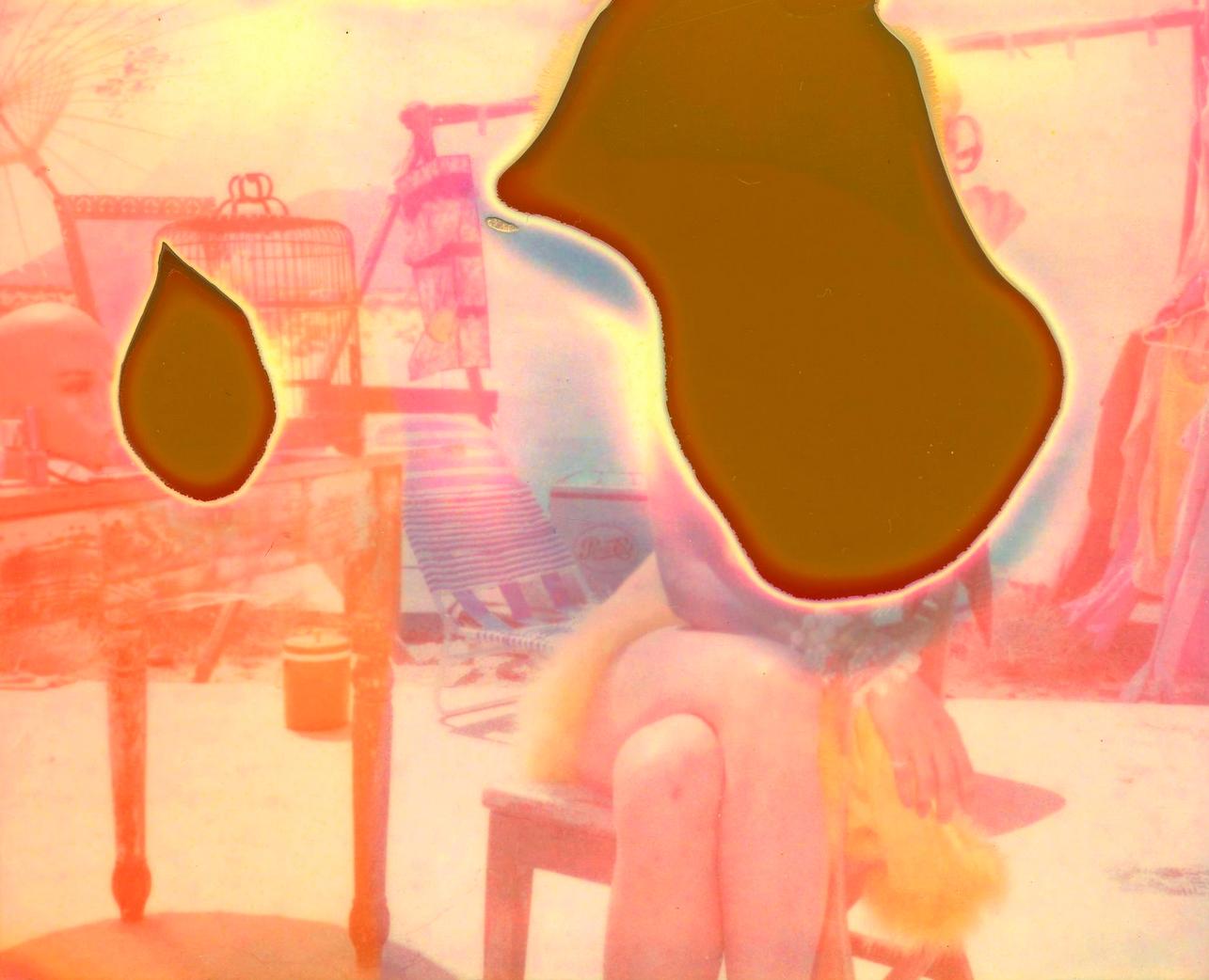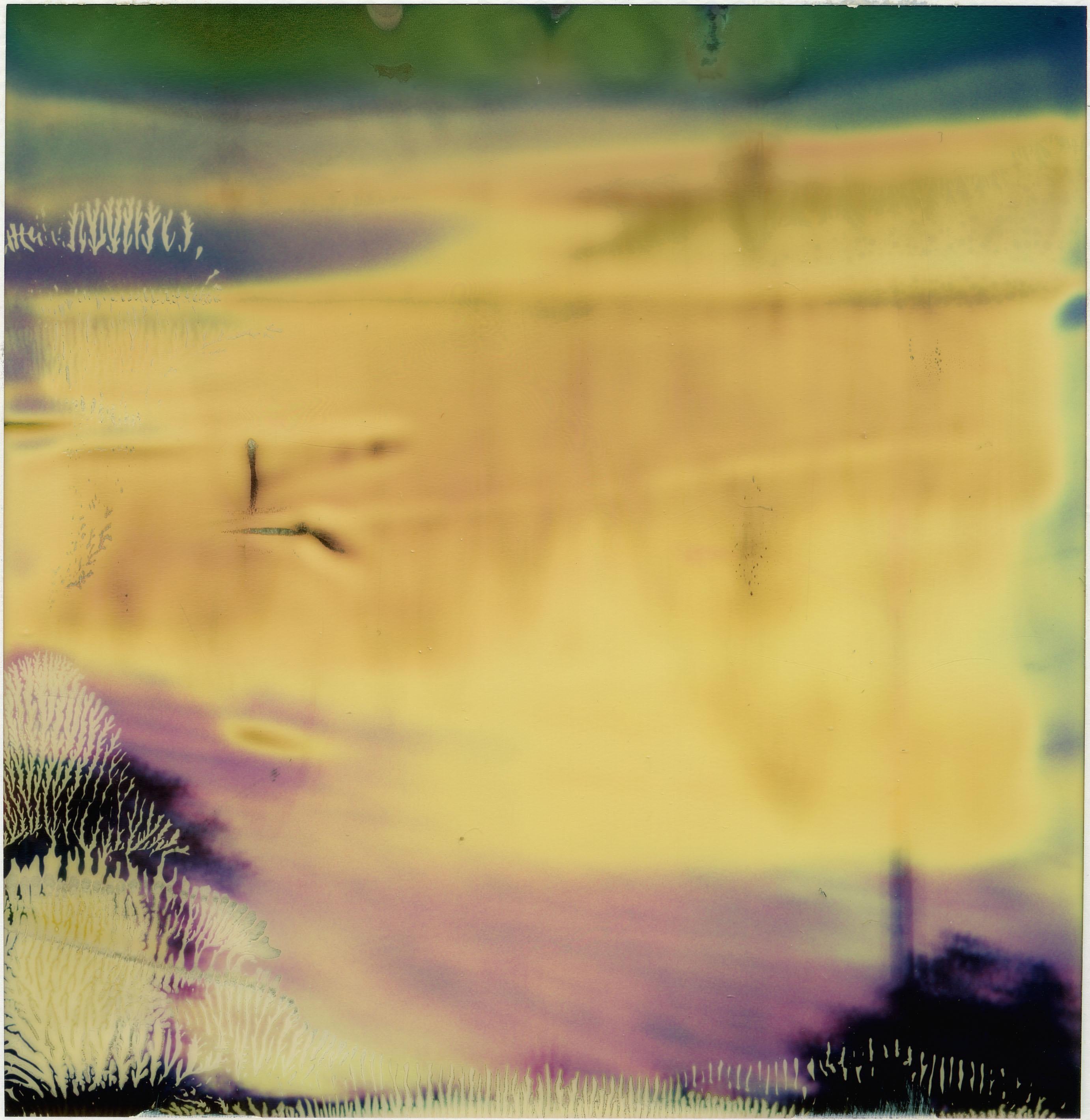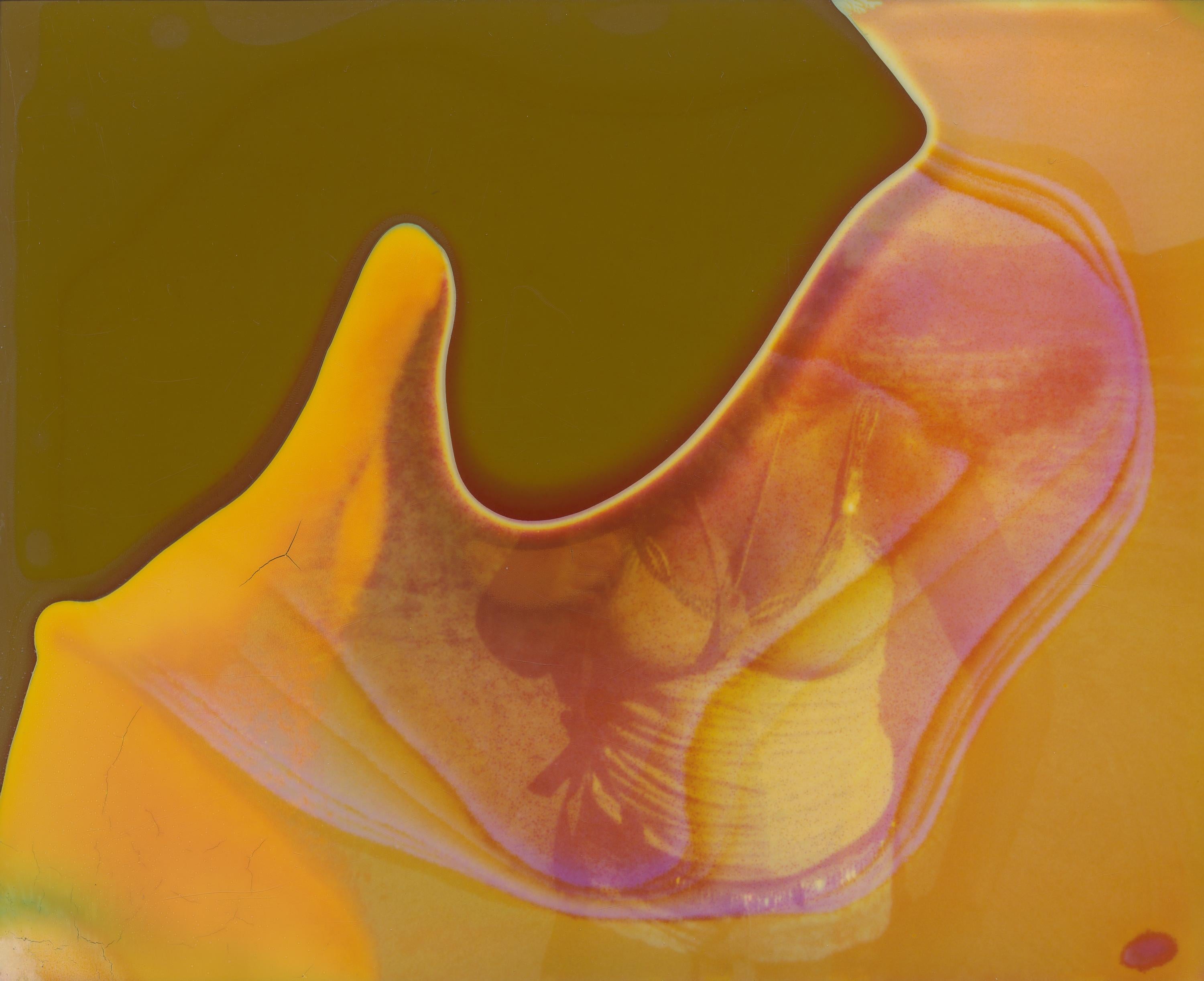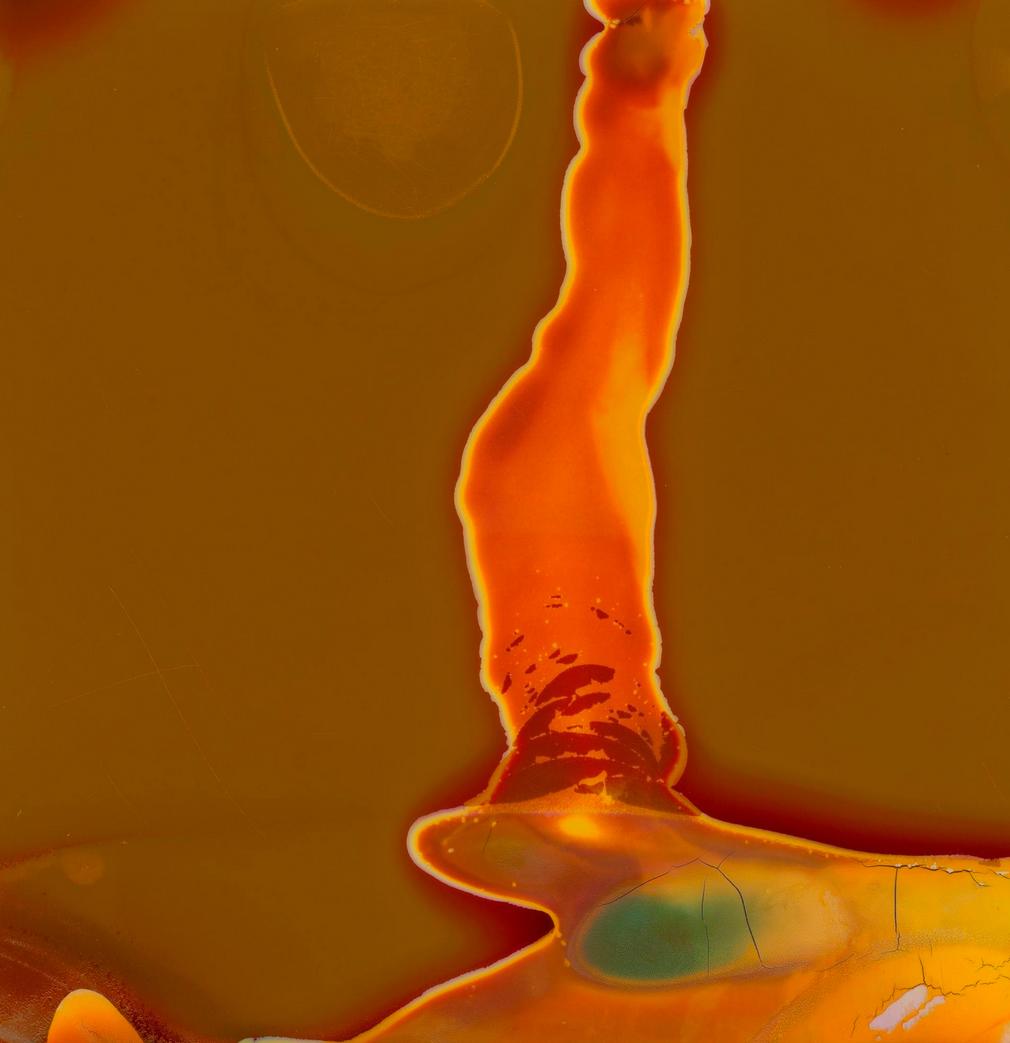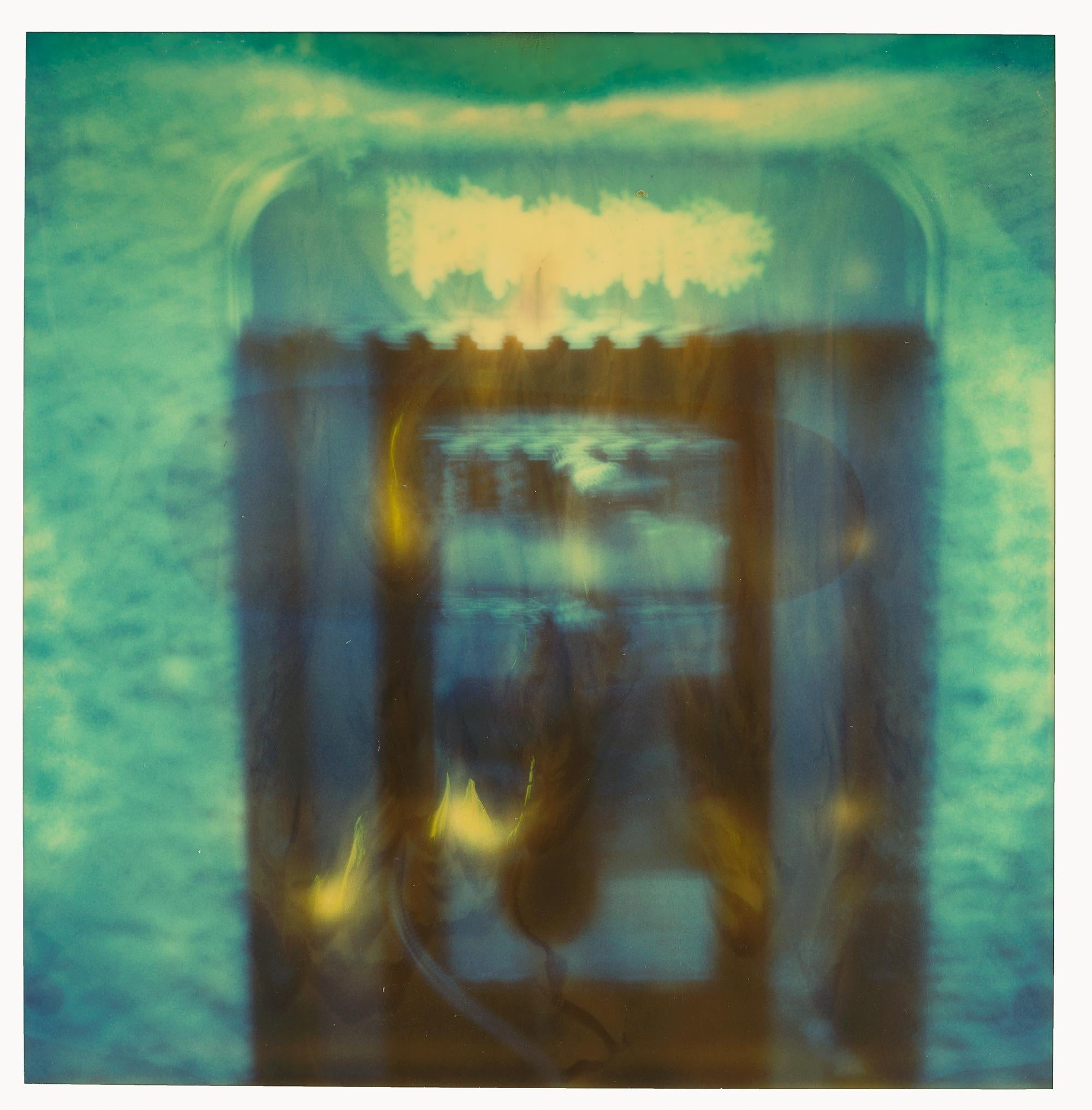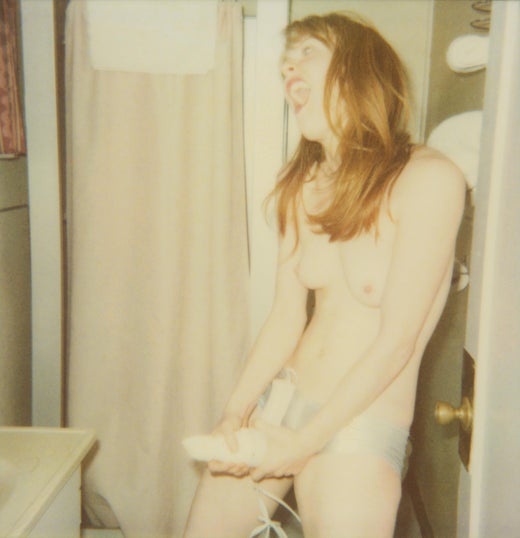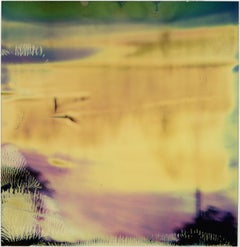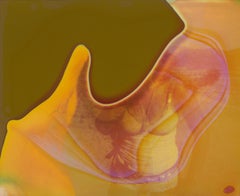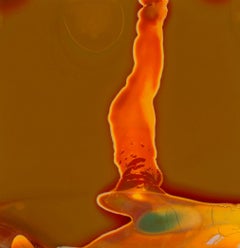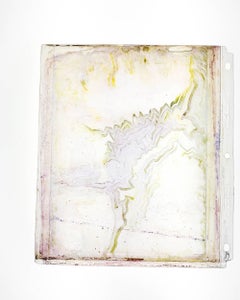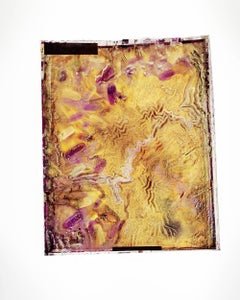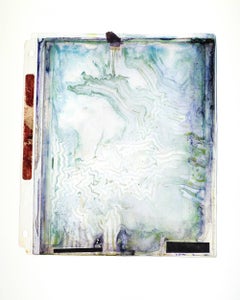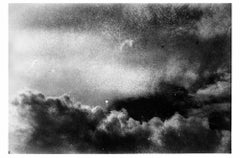Items Similar to Jean Baptist's Dream Sequence - part 5 - (Sidewinder) - Polaroid, Contemporary
Want more images or videos?
Request additional images or videos from the seller
1 of 5
Stefanie SchneiderJean Baptist's Dream Sequence - part 5 - (Sidewinder) - Polaroid, Contemporary2005
2005
$700
£535.21
€612.64
CA$987.08
A$1,074.55
CHF 573.62
MX$12,972.31
NOK 7,212.59
SEK 6,703.63
DKK 4,575.52
About the Item
Jean Baptist's Dream Sequence - part 5 - (Sidewinder) - 2005
50x49cm,
Edition of 10 plus 2 Artist Proofs.
Archival C-Print based on the Polaroid.
Certificate and signature label.
Artist Inventory No. 3421.
Not mounted.
2005 SIDEWINDER - Director / Artist / Camera / Editing - starring JD Rudometkin, Stefanie Schneider, music by JD Rudometkin
private history turned into an intimate mythology of elemental fantasies where reality is perceived through a veil of psychedelic memories and unconscious projections. such is a collection of passions and dreams, an uncanny diary of ephemeral narratives and mental intensities in Stefanie Schneider’s painterly photographs where subjectivity of an ontological doubt uses a poetics of pastische as a vehicle for an intertextual journey towards the truth and the authenticity of primary emotions. here time is immersed in a nostalgic suspense of oneiric dimension, a sort of ambiguous coma of silence and comfort, and open space embraces a psychotic landscape of solitude and accidental pleasure. fetishisized surface of extreme feelings gives a stage for an unsolicited promise of unconditional love and unlimited freedom, a promise framed by sensual tension between fulfillment and expectation. (Adam Budak, Kunsthaus Graz, Oct 2005)
Sidewinder
There’s blood on the dress that hangs in the Airstream trailer outside 29 Palms. With the pistol in her sweat palm touching at his temple. Tell me what god’s gonna do for me and you now Stevie’s saying while Brother John Baptiste looks there across to where her cat seems weak and fed. All the good that comes to me from my believing man, I wanna hear about it said to me like that. Just the way you breathed it like you did 10 minutes ago when I was wrapped so well around your head. Silence then. A baby screams his mother out in the desert night who wakes so late. Orion is a belt John Baptiste looks at through the torn-screen trailer window. There, touching his calf are vipers crawling now across her feet between his knees in front of her he kneeling for his life and they are full of venom with their broken fangs.
A gun at head, where even his breath, so short, is preaching. He’s in a wheat field. John Baptiste. Counting birds on telephone wires hung low in afternoon where his mother’s call cannot now reach him. There she stands a weeping willow with the sidewinder underneath the trailer step a drop of blood upon her ankle with the bullet through its head. A scar follows sweat palm to wrist. Torn Stevie. Scars from the weapon to her toes an accidental act of God her father said. On Vaness at California 16 years ago but who’s counting 6 bullets for the barrel wait beside the temple. The long white shaft of tissue hemmed together God's tattoo along her ribs, hip to breast. She wants to fuck the preacher in her trailer with his bible on the alter front row Stevie asks forgiveness holy father from the car that shook her bones apart. John Baptiste asks to pray before she leads his temple head.
For twenty minutes darkness hides the accidents in trailer shade her childish screams a preacher underneath her shimmer blue bled dress. The prayers he said beside the bed with mother for relatives with tumors, brand new bicycles, and rain. Stevie takes the whisky in her mouth to wash him out the sidewinder skids across her wounded foot of scars. John Baptiste asks the Lord to heal her in the new day that is breaking mouth of whisky spits it laughing father forgive the trigger finger for the viper he gives thanks.
And takes the barrel toward his lips through mumbling supplication kiss it Brother Stevie offers, please, but doesn’t wait him there. Copper penny Sunday School upon the tongue. And closed his eyes. A blur of her and mother. Other bodies. Women, gently crushing spirits. Prayers. His hand under her weight in grams. The fingernail fang and fucks it. So slid the pull of metal out As god can answer. And into her mouth then. Settles. And wet the metal. He touches her, his finger. Viper like. And fuck it sore. Believers. Repentant whore forgiven preacher leaving town in that old ragtop down and left a rag dress bleeding in the Airstream soft, again. (JD Rudometkin)
“Working on Sidewinder with Stefanie Schneider was intense. It is a very personal piece for both of us, though I feel in very different ways. When overdue fears and aspirations are able to surface in a project, the work becomes a mirror. Such efforts are always a risk. I am still uncertain of what exactly to make of it Sidewinder. How much should have been exposed. What needs to remain sacred. I almost did not drive that „68 Deville” out to 29 Palms on the day we were set to shoot. I followed her out there against a feeling I had. Was it fear? I don’t know. Perhaps mistakes do not exist. What is our intuition composed of anyhow? When I look out across the desert, it seems so flat. So free of dramatic lines. That is when a human figure appears, even in the distance, a curiosity. There are so many of us clustered in these cities, who would care. Why take the time? I will always drive out of town back into parts of Sidewinder from time to time.” (JD Rudometkin)
- Creator:Stefanie Schneider (1968, German)
- Creation Year:2005
- Dimensions:Height: 19.69 in (50 cm)Width: 19.3 in (49 cm)Depth: 0.04 in (1 mm)
- More Editions & Sizes:20x20cm, Edition of 10 plus 2 Artist Proofs. Price: $380
- Medium:
- Movement & Style:
- Period:
- Condition:
- Gallery Location:Morongo Valley, CA
- Reference Number:1stDibs: LU652313529172
Stefanie Schneider
Stefanie Schneider received her MFA in Communication Design at the Folkwang Schule Essen, Germany. Her work has been shown at the Museum for Photography, Braunschweig, Museum für Kommunikation, Berlin, the Institut für Neue Medien, Frankfurt, the Nassauischer Kunstverein, Wiesbaden, Kunstverein Bielefeld, Museum für Moderne Kunst Passau, Les Rencontres d'Arles, Foto -Triennale Esslingen., Bombay Beach Biennale 2018, 2019.
About the Seller
4.9
Platinum Seller
Premium sellers with a 4.7+ rating and 24-hour response times
Established in 1996
1stDibs seller since 2017
1,050 sales on 1stDibs
Typical response time: 1 hour
- ShippingRetrieving quote...Shipping from: morongo valley, CA
- Return Policy
More From This Seller
View AllChronometry (Stage of Consciousness) - Polaroid
By Stefanie Schneider
Located in Morongo Valley, CA
Chronometry (Stage of Consciousness) - 2008
20x20cm,
Edition of 10,
Archival C-Print, based on the Polaroid.
Certificate and Signature label.
Artist Inventory #6426
Not mounte...
Category
Early 2000s Contemporary Color Photography
Materials
Photographic Film, Archival Paper, C Print, Color, Polaroid
Mind Storm (The Last Picture Show) - Contemporary, 21st Century, Polaroid
By Stefanie Schneider
Located in Morongo Valley, CA
Mind Storm (The Last Picture Show) - 2000
20x20m,
Edition of 10, plus 2 Artist Proofs.
Archival C-Print, based on the Polaroid.
Certificate and Signature label.
Artist Inventory...
Category
2010s Contemporary Landscape Photography
Materials
Archival Paper, Photographic Paper, C Print, Color, Polaroid
Living in a Dream (Till Death do us Part) - Contemporary, Polaroid, Women
By Stefanie Schneider
Located in Morongo Valley, CA
Living in a Dream (Till Death do us Part) - 2005
20x20cm,
Edition of 10,
Archival C-Print print, based on the Polaroid.
Certificate and Signature label, artist Inventory No. 9781.
Not mounted.
on offer is a piece from the movie "Till Death do us Part"
Stefanie Schneider’s Till Death Do Us Part
or “There is Only the Desert for You.”
BY DREW HAMMOND
Stefanie Schneider’s Til Death to Us Part is a love narrative that comprises three elements:
1.
A montage of still images shot and elaborated by means of her signature technique of using Polaroid formats with outdated and degraded film stock in natural light, with the resulting im ages rephotographed (by other means) enlarged and printed in such a way as to generate further distortions of the image.
2.
Dated Super 8 film footage without a sound track and developed by the artist.
3.
Recorded off-screen narration of texts written by the actors or photographic subjects, and selected by the artist.
At the outset, this method presupposes a tension between still and moving image; between the conventions about the juxtaposition of such images in a moving image presentation; and, and a further tension between the work’s juxtaposition of sound and image, and the conventional relationship between sound and image that occurs in the majority of films. But Till Death Do Us Part also conduces to an implied synthesis of still and moving image by the manner in which the artist edits or cuts the work.
First, she imposes a rigorous criterion of selection, whether to render a section as a still or moving image. The predominance of still images is neither an arbitrary residue of her background as a still photographer—in fact she has years of background in film projects; nor is it a capricious reaction against moving picture convention that demands more moving images than stills. Instead, the number of still images has a direct thematic relation to the fabric of the love story in the following sense. Stills, by definition, have a very different relationship to time than do moving images. The unedited moving shot occurs in real time, and the edited moving shot, despite its artificial rendering of time, all too 2009often affords the viewer an even greater illusion of experiencing reality as it unfolds. It is self-evident that moving images overtly mimic the temporal dynamic of reality.
Frozen in time—at least overtly—still photographic images pose a radical tension with real time. This tension is all the more heightened by their “real” content, by the recording aspect of their constitution. But precisely because they seem to suspend time, they more naturally evoke a sense of the past and of its inherent nostalgia. In this way, they are often more readily evocative of other states of experience of the real, if we properly include in the real our own experience of the past through memory, and its inherent emotions.
This attribute of stills is the real criterion of their selection in Til Death Do Us Part where consistently, the artist associates them with desire, dream, memory, passion, and the ensemble of mental states that accompany a love relationship in its nascent, mature, and declining aspects.
A SYNTHESIS OF MOVING AND STILL IMAGES BOTH FORMAL AND CONCEPTUAL
It is noteworthy that, after a transition from a still image to a moving image, as soon as the viewer expects the movement to continue, there is a “logical” cut that we expect to result in another moving image, not only because of its mise en scène, but also because of its implicit respect of traditional rules of film editing, its planarity, its sight line, its treatment of 3D space—all these lead us to expect that the successive shot, as it is revealed, is bound to be another moving image. But contrary to our expectation, and in delayed reaction, we are startled to find that it is another still image.
One effect of this technique is to reinforce the tension between still and moving image by means of surprise. But in another sense, the technique reminds us that, in film, the moving image is also a succession of stills that only generate an illusion of movement. Although it is a fact that here the artist employs Super 8 footage, in principle, even were the moving images shot with video, the fact would remain since video images are all reducible to a series of discrete still images no matter how “seamless” the transitions between them.
Yet a third effect of the technique has to do with its temporal implication. Often art aspires to conflate or otherwise distort time. Here, instead, the juxtaposition poses a tension between two times: the “real time” of the moving image that is by definition associated with reality in its temporal aspect; and the “frozen time” of the still image associated with an altered sense of time in memory and fantasy of the object of desire—not to mention the unreal time of the sense of the monopolization of the gaze conventionally attributed to the photographic medium, but which here is associated as much with the yearning narrator as it is with the viewer.
In this way, the work establishes and juxtaposes two times for two levels of consciousness, both for the narrator of the story and, implicitly, for the viewer:
A) the immediate experience of reality, and
B) the background of reflective effects of reality, such as dream, memory, fantasy, and their inherent compounding of past and present emotions.
In addition, the piece advances in the direction of a Gesammtkunstwerk, but in a way that reconsiders this synaesthesia as a unified complex of genres—not only because it uses new media that did not exist when the idea was first enunciated in Wagner’s time, but also because it comprises elements that are not entirely of one artist’s making, but which are subsumed by the work overall. The totality remains the vision of one artist.
In this sense, Till Death Do Us Part reveals a further tension between the central intelligence of the artist and the products of other individual participants. This tension is compounded to the degree that the characters’ attributes and narrated statements are part fiction and part reality, part themselves, and part their characters. But Stefanie Schneider is the one who assembles, organizes, and selects them all.
THE RELATIONSHIP BETWEEN THIS IDEA (above) AND PHOTOGRAPHY
This selective aspect of the work is an expansion of idea of the act of photography in which the artistic photographer selects that which is already there, and then, by distortion, definition or delimitation, compositional and lighting emphasis, and by a host of other techniques, subsumes that which is already there to transform it into an image of the artist’s contrivance, one that is no less of the artist’s making than a work in any other medium, but which is distinct from many traditional media (such as painting) in that it retains an evocation of the tension between what is already there and what is of the artist’s making. Should it fail to achieve this, it remains, to that degree, mere illustration to which aesthetic technique has been applied with greater or lesser skill.
The way Til Death Do Us Part expands this basic principle of the photographic act, is to apply it to further existing elements, and, similarly, to transform them. These additional existing elements include written or improvised pieces narrated by their authors in a way that shifts between their own identities and the identities of fictional characters. Such characters derive partially from their own identities by making use of real or imagined memories, dreams, fears of the future, genuine impressions, and emotional responses to unexpected or even banal events. There is also music, with voice and instrumental accompaniment. The music slips between integration with the narrative voices and disjunction, between consistency and tension. At times it would direct the mood, and at other times it would disrupt.
Despite that much of this material is made by others, it becomes, like the reality that is the raw material of an art photo, subsumed and transformed by the overall aesthetic act of the manner of its selection, distortion, organization, duration, and emotional effect.
* * *
David Lean was fond of saying that a love story is most effective in a squalid visual environment. In Til Death Do Us Part, the squalor of the American desert...
Category
Early 2000s Contemporary Color Photography
Materials
Archival Paper, Photographic Paper, C Print, Color, Polaroid
Abstract I (Sidewinder) - Polaroid
By Stefanie Schneider
Located in Morongo Valley, CA
Abstract I (Sidewinder) - 2008
20x20cm,
Edition of 10,
Archival C-Print, based on the Polaroid.
Certificate and Signature label.
Artist Inventory #3804
Not mounted.
Stefanie...
Category
Early 2000s Contemporary Color Photography
Materials
Photographic Film, Archival Paper, C Print, Color, Polaroid
Dreamscape (Wastelands) - Contemporary, Abstract, Polaroid, Expired, Photograph
By Stefanie Schneider
Located in Morongo Valley, CA
Dreamscape (Wastelands), 2003
20x20cm
Edition of 10, plus 2 Artist Proofs.
Archival C-Print, based on the original Polaroid.
Certificate and Signature label.
Artist inventor...
Category
Early 2000s Contemporary Color Photography
Materials
Archival Paper, Photographic Paper, C Print, Color, Polaroid
Mindscreen 10 - Contemporary, 21st Century, Polaroid, Figurative, Color
By Stefanie Schneider
Located in Morongo Valley, CA
Mindscreen 10 - 1999
58x56cm,
Edition of 10.
Analog C-Print, hand-printed by the artist, based on the Polaroid.
Signature label and Certificate.
artist Inventory No. 244.04.
Not m...
Category
1990s Contemporary Color Photography
Materials
Archival Paper, Photographic Paper, C Print, Color, Polaroid
You May Also Like
Untitled 14.11 (1991-2014)
By Rita Maas
Located in Sante Fe, NM
20th Century Plastics
The images in this series resemble gestural abstract paintings while clearly being something else. Driven by entropic forces, pictures once fixed within long...
Category
21st Century and Contemporary Contemporary Color Photography
Materials
Archival Pigment
Price Upon Request
Untitled 14.17 (1990-2014)
By Rita Maas
Located in Sante Fe, NM
20th Century Plastics
The images in this series resemble gestural abstract paintings while clearly being something else. Driven by entropic forces, pictures once fixed within long...
Category
21st Century and Contemporary Contemporary Color Photography
Materials
Archival Pigment
Price Upon Request
Untitled 14.19 (1992-2014)
By Rita Maas
Located in Sante Fe, NM
20th Century Plastics
The images in this series resemble gestural abstract paintings while clearly being something else. Driven by entropic forces, pictures once fixed within long...
Category
21st Century and Contemporary Contemporary Color Photography
Materials
Archival Pigment
Price Upon Request
Expired_14_2020 - Photograph by Serena Zeppilli
Located in Roma, IT
This photograph Expired_14_2020 was taken by the Italian photographer Serena Zeppilli.
It is part of the series "I was looking for something that I...
Category
21st Century and Contemporary Contemporary Figurative Photography
Materials
Photographic Paper
Untitled 14.15 (1991-2014)
By Rita Maas
Located in Sante Fe, NM
20th Century Plastics
The images in this series resemble gestural abstract paintings while clearly being something else. Driven by entropic forces, pictures once fixed within long...
Category
21st Century and Contemporary Contemporary Color Photography
Materials
Archival Pigment
Price Upon Request
Jane Calvin Composite Photograph, 1990
By Jane Calvin
Located in New York, NY
Jane Calvin (American, b. 1938)
Untitled, 1990
Photograph
Sight: 19 1/2 x 15 1/2 in.
Framed: 26 7/8 x 22 1/2 x 1 1/4 in.
Edition 2/10
Provenance: Collection of Robert Burge, New Y...
Category
1990s Contemporary Color Photography
Materials
Color
More Ways To Browse
Frida Kahlo Self Portrait
Gentlemen Prefer Blondes
Jessica Lange
Pinup Art
Vintage Jane Russell
Alec Byrne
Andy Warhol Self Portrait
Jimi Hendrix Gered Mankowitz
Jimi Hendrix Guitar
Marilyn Monroe The Seven Year Itch
Portrait Of Leonardo
Vintage Nabokov
Goldie Hawn
Johnny Depp Art
Marilyn Monroe 1953
Mia Farrow
Monocled Miss
Slim Aarons Monocled Miss
